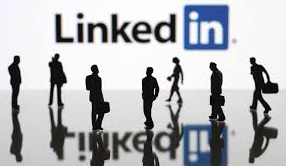Looking for a job can be daunting at the best of times, let alone after you’ve been diagnosed with a serious illness. At Shine, we know that work is hugely important to younger adults (not least because we need the cash), and we’ve got some really useful resources on our website. But to help you further, this is the first of two recruitment blogs that Shine is publishing. Part one below provides insight into the recruitment process, while the second part answers questions from the Shine community. We are very grateful to Ash Holmes for providing his insight and expertise! If you’d like to learn more or connect with him, please see the end of this blog.
Applying for a job and going through a recruitment process can be a daunting prospect at the best of times, let alone when returning from a career break or asking for flexible working. But the key is to demonstrate the skills, experience, knowledge, and therefore value you can bring to the role and organisation. Always ask yourself, ‘how can I add value to the role/company?’ and make sure that you articulate this to the hiring manager/recruiter.
Looking for a new role can be a job in itself. The candidates who tailor their CV and approach to go the extra mile will often be more successful – maybe not because they were the best fit, but because they demonstrated desire, passion, and the relevance of their skills, experience, and knowledge.
Going the extra mile doesn’t have to be complicated:
- Call the company/recruiter before submitting your application. You might have to try for a few days! Find out the name of the person in charge of this position, and ask for their phone number or email. Ask them what will make an application stand out. What are the key challenges for the company that this role will solve? Most importantly, try to build a relationship and be memorable so that they recognise your name/CV!
- Tailor the opening paragraph of your CV to name the company and role, highlighting the three key skills/experiences that make you suitable. Don’t be afraid to use bold text or underline to make your point.
- After applying via a job board or website, follow up directly. Calling is generally best (remember, especially when you don’t know someone, it’s easier to build a relationship based on a conversation). If you’re struggling to call or feeling anxious, at the very least drop them an email to see how things are going.
One of the concerns I’ve heard a lot from people in Shine is how to deal with the question of cancer when applying for jobs. I asked my network on LinkedIn what they thought, and some of the responses are below. While this approach won’t be for everyone and talking openly about cancer is not easy (or legally required!), I hope these positive responses provide encouragement to you all.
- “Personally I don’t like to see unexplained gaps in a CV but I don’t understand why any employer would be put off by the fact a candidate had survived cancer – which, in my mind, demonstrates physical and mental resilience and resourcefulness. Don’t hide it be, proud of what you have achieved.”
- “I know a young man who is currently under treatment for leukaemia and is being supported by his girlfriend. The courage, fortitude, tenacity and emotional resilience both of them are showing is a wonder to behold and fills me with admiration. They are both in their 20s and at the early stages of their respective careers. My advice would be not to put a career gap on your CV but to address it head-on and explain to the prospective employer what you have learned and how you have changed as a result of the experience.”
And speaking of networks, have you thought about how you can ask yours to help? Taking some time to map your network might just help you to find your ideal career. Candidates referred to organisations often secure an interview quicker and easier than candidates who apply via job boards or online.
LinkedIn was created specifically to connect with your business network, but Facebook might also provide job opportunities. If you do not have a LinkedIn profile I would recommend creating one and using their tools to connect with any contacts in your  phone book, email address book, or at previous companies. I was recently looking for a new role myself and secured two interviews off the back of posting an updated on LinkedIn saying I am looking. ASTRiiD, is also worth looking at. It’s a new charity that links businesses with individuals with long-term health conditions; it’s fairly new but it’s growing and it’s definitely worth checking out for part-time or short-term roles.
phone book, email address book, or at previous companies. I was recently looking for a new role myself and secured two interviews off the back of posting an updated on LinkedIn saying I am looking. ASTRiiD, is also worth looking at. It’s a new charity that links businesses with individuals with long-term health conditions; it’s fairly new but it’s growing and it’s definitely worth checking out for part-time or short-term roles. 
Now for some reality. Unfortunately, not every organisation or recruitment company has the best process in place, and that means that you need to be resilient. You will not hear back from some, you will not receive specific feedback about why it is a ‘no’, and you will get frustrated. However, try to stay positive, focused and determined. Setting goals for what you want to achieve each day/week can help to keep you focused – whether that is roles applied for, hiring managers spoken to, or interviews secured.
I recommend creating a simple spreadsheet or list of each role you apply for. This will help you to be proactive in following up with a company, so you stand out from the competition. Too many candidates simply click ‘apply’ to as many roles as possible and never follow up. Be different, be memorable!
You might want to set up your spreadsheet like this:
| Role | Company | Date applied | Contact name, number, email | Last update |
| Marketing Exec | Tesco | 12/12/2017 | Dave Smith, 07700111222 | Spoke on phone, Dave will come back to me this week |
For more on looking for a job post-cancer, stay tuned! Our second blog will be out in two weeks!
Ash Holmes has spent the last seven years working in the recruitment industry. As well as working with thousands of candidates, Ash has created and delivered employability training to college students and individuals who are not in work, education or employment. Ash has placed candidates with organisations as varied as Red Bull, Olympus KeyMed, Tottenham Hotspur, and Red Gate Software. He is more than happy to answer any follow-up questions and connect on LinkedIn.
